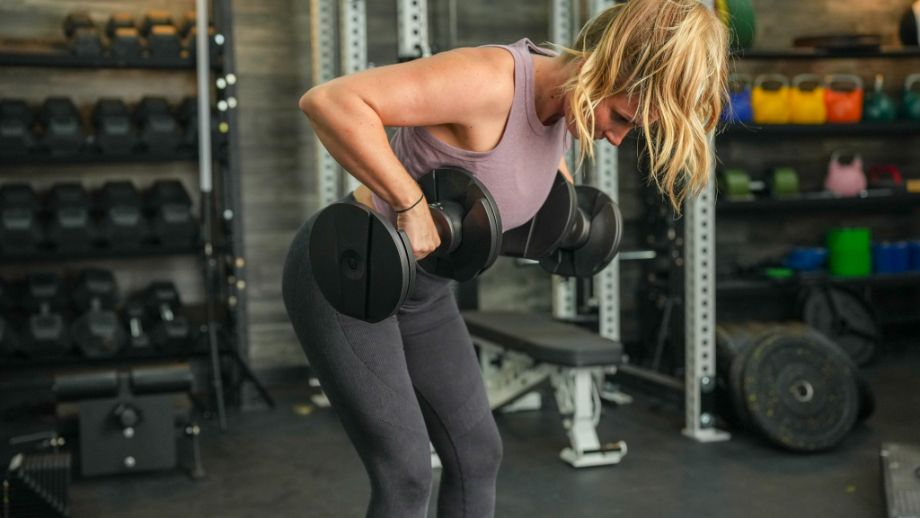We test and review fitness products based on an independent, multi-point methodology. If you use our links to purchase something, we may earn a commission. Read our disclosures.
Long before I became a certified personal trainer (CPT) or completed the 75 Hard Challenge, I once tipped the scales at an all-time high of 285 pounds. Seeing that eye-popping number forced me to change my eating habits and embark on a fitness journey that ultimately led me to where I am today at GGR.
Despite having plenty of strength training experience from playing high-school football and college/men’s rugby, I knew I needed a new plan of attack to achieve my weight-loss goals and reshape my body. In search of a high-impact, time-efficient way to trim inches off my waistline and pack muscle on my frame, I found exactly what I was looking for in the form of circuit training.
RELATED: Interval Training Workouts
Although my first few full-body workouts left me feeling sore for days, I quickly fell in love with the concept of working several different muscle groups in a single high-intensity session. And even though my out-of-shape self needed way more than a few seconds of rest between exercises, I eventually found myself capable of going longer and harder with less rest.
While my priorities have changed since I lost 75 pounds, I still regularly perform circuit training exercises and high-intensity interval training (HIIT) workouts to maintain my conditioning and challenge myself mentally. But what exactly should you do to burn fat and build muscle at the same time?
To help maximize your time and effort in the gym, I put together a list of my 10 favorite circuit training exercises and created a sample workout so you can start inching closer toward accomplishing your own fitness goals.
My 10 Favorite Circuit Training Exercises
- Goblet squat
- Walking lunges
- Push-up
- Pull-up
- Mountain climbers
- Kettlebell swings
- Burpees
- Step-ups
- Romanian deadlift
- Bent-over row
Goblet Squat
Muscles worked: Quadriceps, hamstrings, glutes, calves, hip flexors, erector spinae, core
Benefits: A fundamental movement pattern everyone should master, the squat engages multiple muscle groups and can easily be adapted to your fitness level. Beginners can start with bodyweight squats before advancing to the goblet squat. Experienced lifters can choose between a front squat vs. back squat, with the former emphasizing your quads and core.
How to do it:
- Stand with your feet shoulder-width apart and your toes pointed slightly out while holding a kettlebell at chest level.
- Engage your core, maintain an upright torso, and descend into the squat position by bending your knees and driving your hips back.
- Lower yourself down until your thighs are parallel with the floor.
- Push through your heels and extend your legs to return to the starting position.
- Repeat for the desired number of repetitions or time.
RELATED: Heel-Elevated Goblet Squat
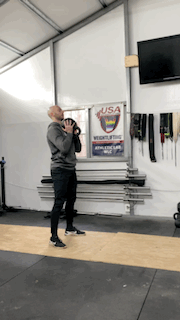
Walking Lunges
Muscles worked: Quadriceps, hamstrings, glutes, core
Benefits: Unilateral exercises like the lunge are effective at addressing muscular imbalances. Just like the squat, you can train this fundamental movement pattern in a number of ways based on your experience level. Beginners can stick with the bodyweight version until they have the necessary mobility and strength to handle weights. Those with resistance training experience can hold a pair of the best dumbbells (or kettlebells) by their side or even put a loaded barbell on their back for walking lunges.
How to do it:
- Hold a pair of dumbbells by your side.
- Engage your core, maintain an upright torso, and take a step forward with your right foot.
- Lower yourself to the floor so your left knee is just above the ground and your right leg forms a 90-degree angle.
- Drive off your right foot and take a step forward with your left leg.
- Lower yourself to the floor so your right knee is just above the ground and your left leg forms a 90-degree angle.
- Maintain a steady pace, alternating sides for the desired amount of time or distance.
RELATED: Split Squat vs Lunge
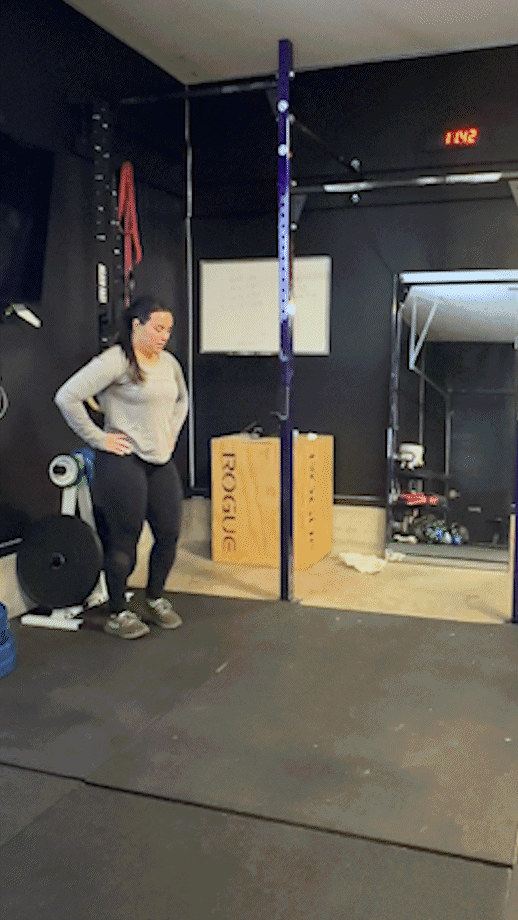
Push-Up
Muscles worked: Pectoralis major, pectoralis minor, deltoids, triceps, trapezius, latissimus dorsi, rectus abdominis
Benefits: A timeless upper-body exercise that also engages your core and glutes, the push-up is well-suited for circuit training since you have plenty of flexibility to make it as challenging (or manageable) as you’d like. The standard version will primarily work your pectorals (chest muscles) and triceps. You can also take a more targeted approach with a variation like the diamond push-up, which places even more emphasis on the horseshoe-shaped muscle on the back of your upper arms.
How to do it:
- Start in a plank position with your hands slightly wider than shoulder-width apart.
- Lower your body until your chest is just above the floor, keeping a straight line from your head to heels.
- Push back up to the starting position by extending your arms.
- Repeat for the desired number of reps.
RELATED: 17 Push-Up Variations
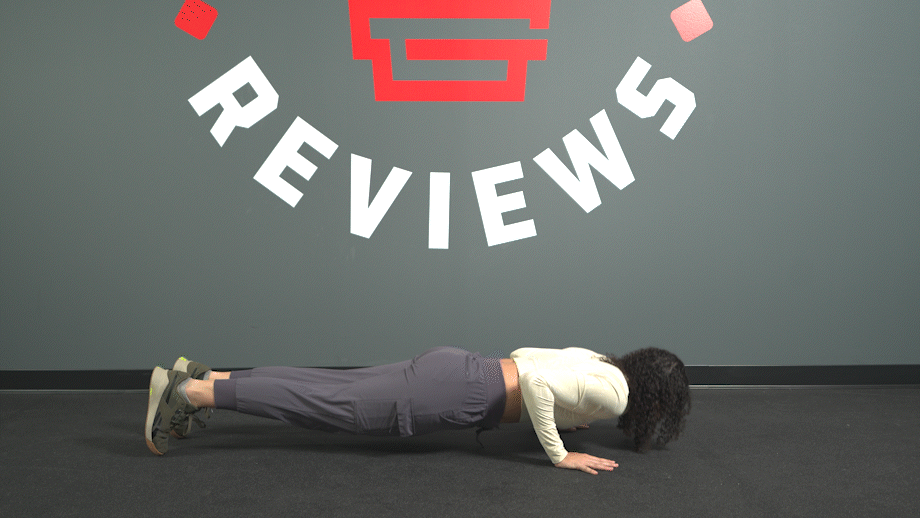
Pull-Up
Muscles worked: Latissimus dorsi, biceps, rhomboids, trapezius, serratus anterior, pectoralis major
Benefits: Pull-ups are one of the best bodyweight exercises for developing upper-body strength. They also help enhance your grip strength, leading to better performance in pull-based exercises like the deadlift.
How to do it:
- Grab a pull-up bar with your palms facing away from you, hands shoulder-width apart.
- Enter a dead hang with your arms fully extended.
- Pull yourself up until your chin is above the bar.
- Lower yourself back down with control.
- Repeat for the desired number of reps.
RELATED: Best Pull-Up Variations
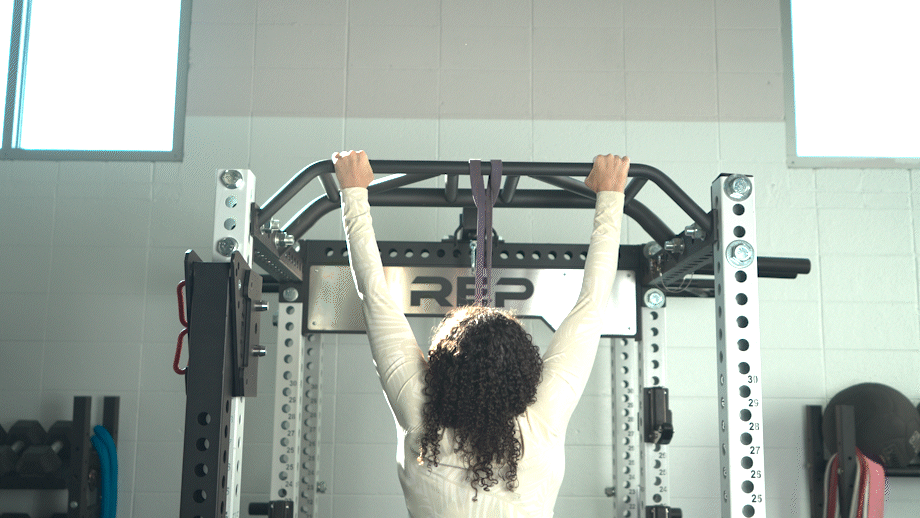
Mountain Climbers
Muscles worked: Deltoids, latissimus dorsi, triceps, pectorals, quadriceps, glutes, hamstrings, calves, trapezius, core
Benefits: A low-impact, full-body exercise that tests your strength and stamina, mountain climbers require little space and no equipment. They do, however, require good coordination and core strength. They’re effective at raising your heart rate and getting your blood pumping—especially if you drive your knees toward your chest at a fast pace.
How to do it:
- Start in a plank position.
- Bring your right knee toward your chest.
- Quickly switch legs, bringing your left knee toward your chest while pushing your right leg back.
- Continue alternating legs rapidly for the desired number of reps or time.
RELATED: Best Low-Impact Exercises
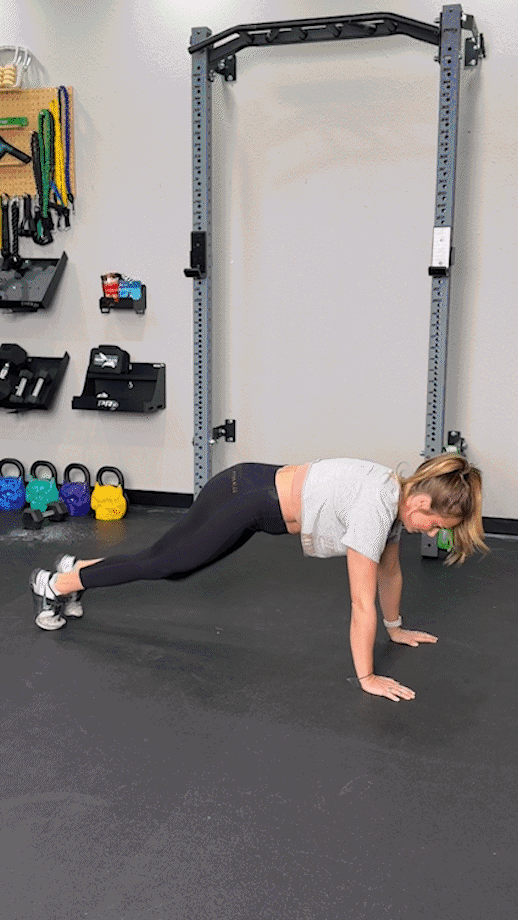
Kettlebell Swings
Muscles worked: Rectus abdominis, obliques, transverse abdominis, erector spinae quadriceps, glutes, hamstrings, hip flexors, deltoids, rhomboids
Benefits: Whether you perform them as part of your warm-up or training session, kettlebell swings get just about every muscle group firing. This compound exercise encourages proper hip-hinge mechanics and forces you to coordinate your upper and lower body to allow for smooth swinging.
How to do it:
- Stand with your feet about shoulder-width apart, holding a kettlebell by the handle with both hands, letting it hang directly in front of you with your arms fully extended.
- Engage your core, maintain a neutral spine, and hinge at your hips by pushing them back.
- Explosively drive your hips forward, using the momentum to swing the kettlebell upward until it’s parallel to the floor. While this is the finish position for the Russian kettlebell swing, the American version requires you to swing the kettlebell all the way over your head.
- Carefully lower the kettlebell back to the starting position and immediately cycle into the next rep.
- Maintain a steady rhythm for the desired number of reps or time.
RELATED: Double Kettlebell Swing
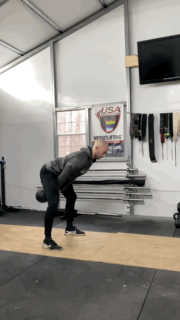
Burpees
Muscles worked: Pectorals, triceps, rhomboids, latissimus dorsi, quadriceps, hamstrings, glutes, calves, core
Benefits: Do I like doing burpees? Not necessarily (and I’m not sure anyone does). However, they’re a great full-body exercise that can help enhance your cardio capacity, agility, and overall athleticism. Combining elements of a push-up with a squat jump should leave you feeling completely gassed by the last rep.
How to do it:
- Start in a standing position.
- Drop into a squat position with your hands on the ground in front of you.
- Kick your feet back into a plank position.
- Perform a push-up.
- Jump your feet back to the squat position.
- Jump up explosively with your arms extended overhead.
- Repeat for the desired number of reps.
RELATED: The 12 Best Burpee Alternatives
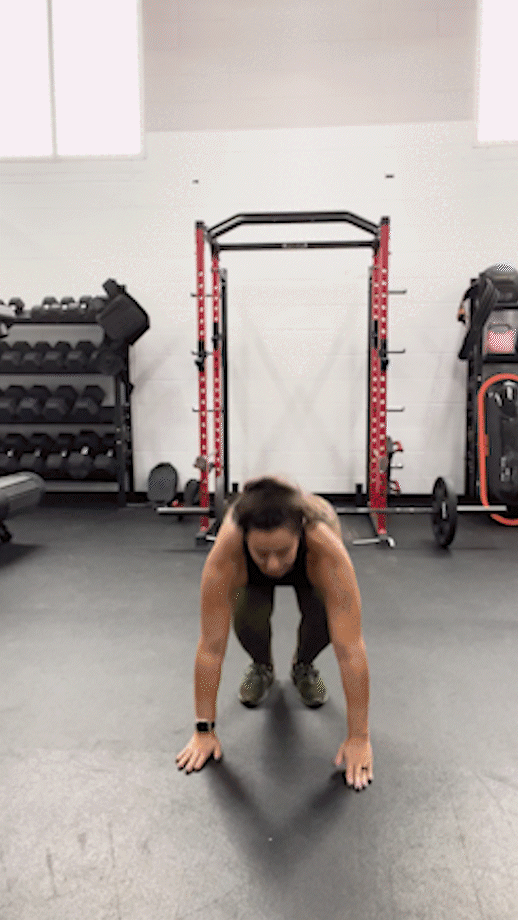
Step-Ups
Muscles worked: Hamstrings, glutes, hip flexors, rectus abdominis, erector spinae
Benefits: The step-up exercise is a great way to simultaneously work on your aerobic capacity and lower-body strength. In addition, this unilateral exercise can help fix muscular weaknesses or imbalances by isolating each leg.
How to do it:
- Stand in front of a plyo box or weight bench, holding a pair of dumbbells or kettlebells by your sides.
- Step onto the box or bench with your right foot.
- Push through your heel, extend your right leg, and drive your left knee into the air explosively.
- Place your left foot back on the floor, followed by your right foot.
- Repeat on the other side, alternating for the desired number of reps or time.
Expert tip: Stick with just your body weight if you don’t have the coordination or confidence to hold onto weights and step up…yet.
RELATED: Best Plyo Boxes
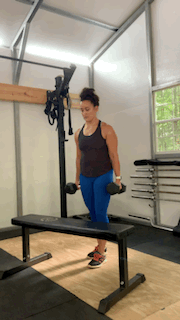
Romanian Deadlift
Muscles worked: Hamstrings, glutes, erector spinae, rectus abdominis
Benefits: As much as I like the conventional barbell deadlift for building a strong, stable posterior chain and massive upper back, I prefer a dumbbell or kettlebell Romanian deadlift for circuit training. Changing weights on a barbell is much less time-efficient, and it can be difficult to find enough space in a commercial gym to set it up and still have room to perform other exercises. So, for the sake of time and real estate, stick with kettlebells or dumbbells and hit your hammies hard.
How to do it:
- Stand with your feet about hip-width apart, holding a pair of dumbbells or kettlebells directly in front of you.
- Engage your core, maintain a neutral spine, and hinge at your hips.
- Keeping the weights as close to your shins as possible, begin lowering them toward the floor until you feel a deep stretch in your hamstrings.
- Bring your hips forward and slowly lift your upper body to return to the starting position, making sure to keep a flat back throughout.
- Repeat for the desired number of reps or time.
RELATED: Romanian Deadlift vs Deadlift
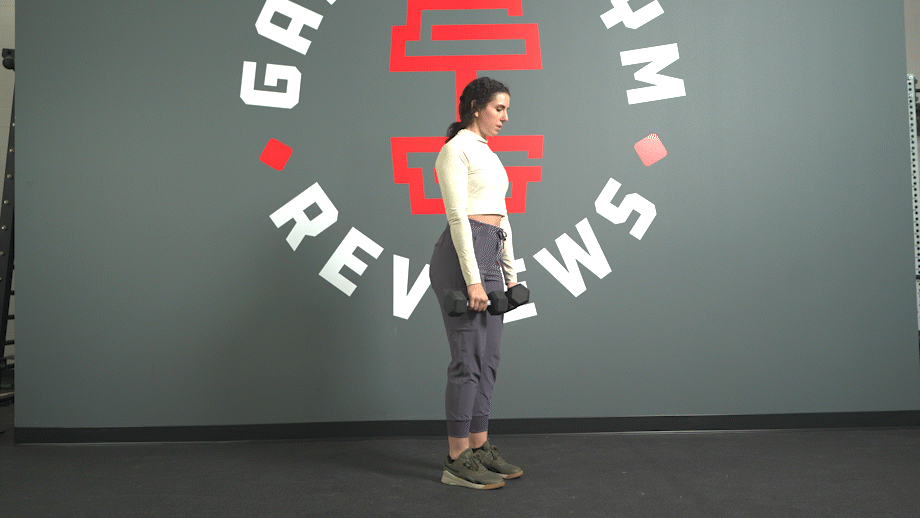
Bent-Over Row
Muscles worked: Latissimus dorsi, rhomboids, trapezius, biceps, rectus abdominis, erector spinae, hamstrings, glutes
Benefits: Bent-over rows can help you develop a strong, muscular back and stable core no matter which type of weight you use. This posterior chain builder also engages your glutes and hamstrings, making it as much of a lower-body exercise as it is an upper body one.
How to do it:
- Grab a loaded barbell with your hands about shoulder width-apart and let it hang in front of you. (You can also use a pair of dumbbells or kettlebells.)
- Engage your core, hinge at your hips, and bend your knees slightly.
- Maintain a flat back and pull the weight toward your chest.
- Squeeze your shoulder blades at the top of the movement, then carefully lower the weight back down.
- Repeat for the desired number of reps.
RELATED: Posterior Chain Exercises
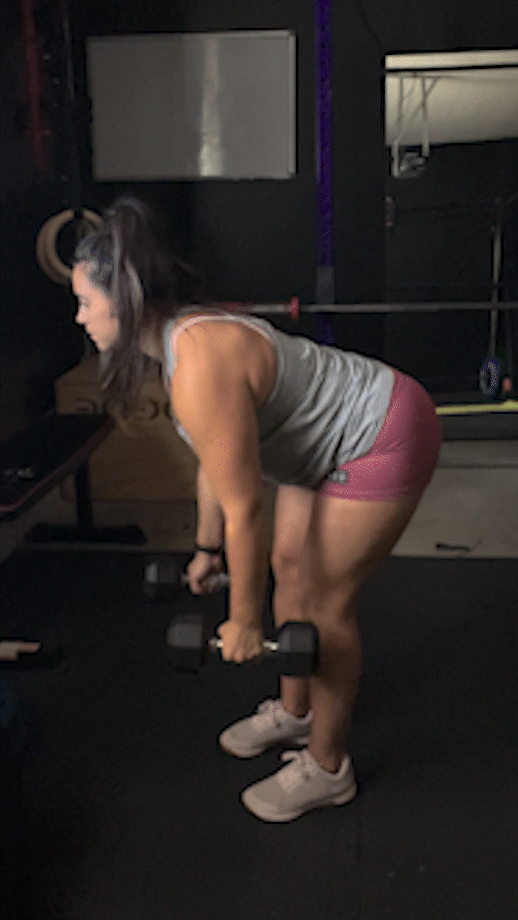
Sample Full-Body Circuit Training Workout
Now that you know what exercises to perform, it’s time to put all of them together in a cohesive HIIT session. There are a few different ways to go about circuit training, including Tabata-style, where you alternate between periods of work and rest.
I like to perform a set of movements consecutively with minimal rest between. Once I finish the circuit, I’ll rest for 2 to 3 minutes and repeat it several times. That’s the route I took with this sample full-body workout. I recommend no more than three rounds for beginners, as this workout is quite taxing on your central nervous system.
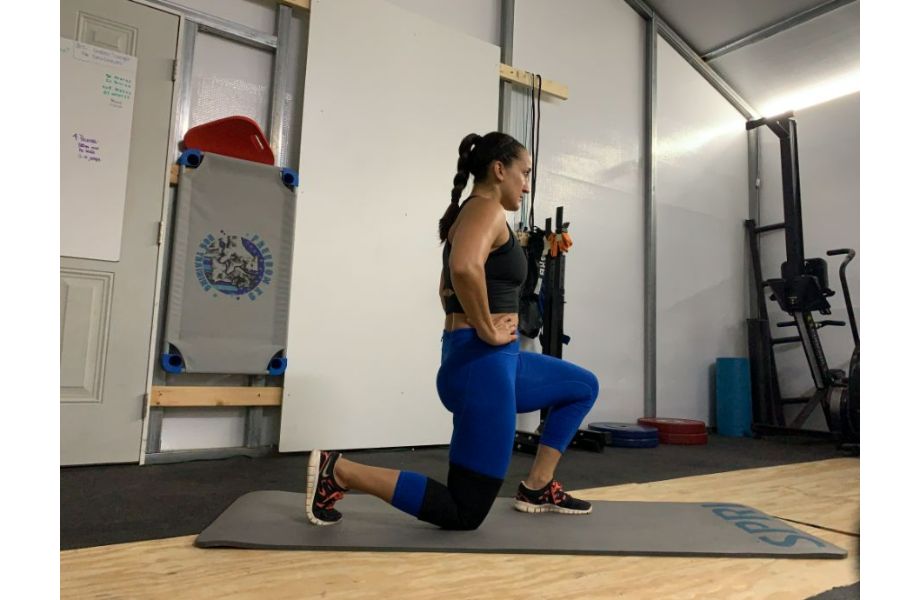
This session is designed for those who have some experience with circuit training. However, you can easily modify it based on your fitness level and comfort with certain exercises. For example, you can swap out goblet squats for bodyweight squats, or perform a burpee without the push-up. You can also cut down the reps/work intervals and/or incorporate brief rest periods of no more than 30 seconds between exercises if you need some time to catch your breath.
Make sure to perform warm-up exercises before you ramp up the intensity. When you’ve made it through a few rounds, end with cool-down exercises to bring your heart rate down. Now, onto the workout!
| Exercise | Reps/Time |
| Kettlebell Swings | 30 sec. |
| Push-Up | 10-15 reps |
| Walking Lunges | 30 sec. |
| Pull-Up | 10 reps (or as many as possible in 30 sec.) |
| Step-Ups | 30 sec. |
| Bent-Over Row | 10 reps |
| Mountain Climbers | 30 sec. |
| Goblet Squat | 10-15 reps |
| Burpees | 30 sec. |
| Romanian Deadlift | 10 reps |
RELATED: Kettlebell HIIT Workout
Benefits of Circuit Training Exercises
The benefits of HIIT make it attractive to such a wide range of people. Beginners who’ve never touched a barbell can still reap fat-burning and muscle-building rewards just as much as experienced athletes who utilize circuit training exercises to stay game-ready.
Let’s explore some of the benefits of making these types of workouts into your fitness routine.
Allows You To Build Muscle and Burn Fat
Let’s be honest: Who doesn’t want to build muscle and burn fat at the same time? The body recomposition process isn’t easy but can be made easier by choosing the right type of training. According to a 2021 systematic review1, resistance circuit-based training is effective at decreasing total body fat and increasing muscle mass in adults.
Talk about killing two birds with one (Atlas) stone!
RELATED: How To Build Muscle
Can Help Enhance Your Cardiovascular Fitness
As a time-efficient form of high-intensity exercise, circuit training can also positively impact your cardiovascular fitness and overall conditioning. According to a 2013 study in the Journal of Human Kinetics2 on 72 children between the ages of 10 to 12, a circuit training program was effective at increasing and maintaining both muscular and cardiovascular endurance.
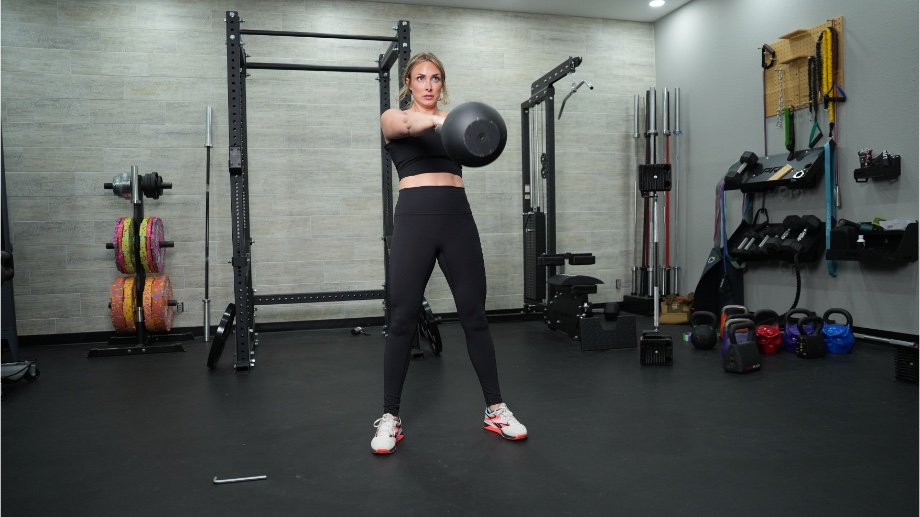
Anecdotally speaking, I can vouch for the positive effect circuit training exercises like burpees, mountain climbers, and even walking lunges can have on building your aerobic capacity. Although I initially struggled to make it through 30 seconds of any exercise, I was able to increase my work intervals after a few weeks of consistent practice. Eventually, I expanded my repertoire to include other cardio-centric exercises like sled pushes and battle rope slams, which I wouldn’t have thought possible when I started circuit training.
RELATED: Best Cardiovascular Exercises
They’re Highly Adaptable
One of the reasons I love circuit training is that it’s highly customizable. You can choose different exercises, rep schemes, and work-to-rest ratios. You can go the no-equipment route or build a workout entirely around a single piece of equipment, such as a HIIT elliptical workout.
This gives you ample flexibility to tailor a session based on someone’s fitness level, access to equipment, or time constraints.
RELATED: 12 Moves For the Perfect No-Equipment Beach Workout
Circuit Training Safety Tips and Precautions
Combining cardio exercises with strength training movements can be an effective recipe for body recomposition. However, as someone who utilized circuits extensively to lose body fat and pack on lean muscle at the beginning of my fitness journey, I’ll be the first to admit it’s not easy to sustain a high level of performance given the highly demanding nature of this training modality.
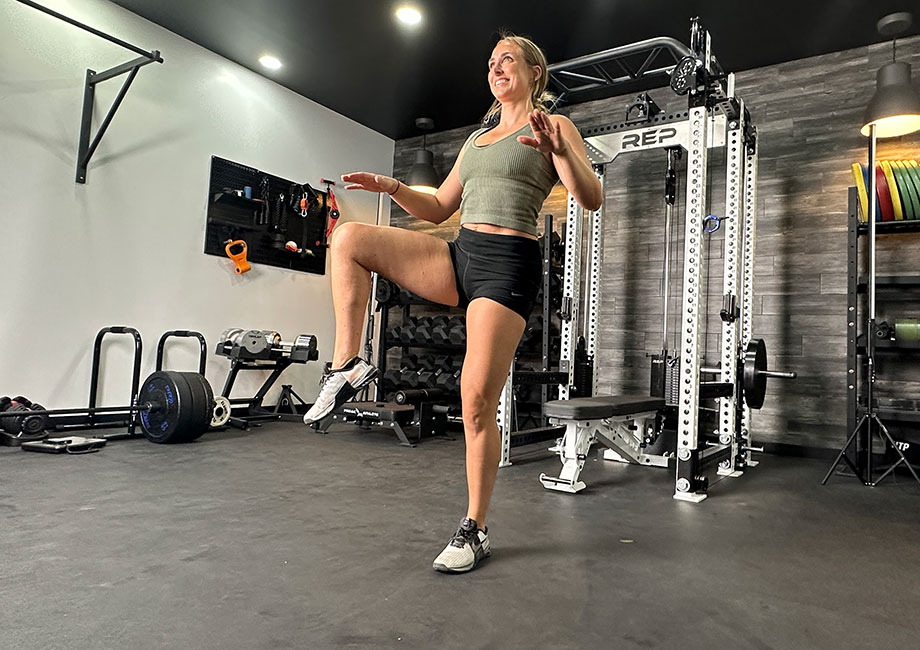
Based on my experience as an athlete and CPT, keep these key safety tips and precautions in mind before you go all-in on circuit training:
- Pay attention to your heart rate: A proper HIIT workout will cause your heart rate to skyrocket. For example, mine will usually be in the 160 to 170 BPM (beats per minute) range at the end of a tough work interval. While I believe in pushing yourself, it’s also important not to overdo it to the point where you get lightheaded or pass out from going too hard. Wearing one of the best fitness trackers will give you real-time data on your heart rate and other key health metrics.
- Utilize different work-to-rest ratios: Don’t fall into the trap of thinking you have to use a 1:1 work-to-rest ratio every time. Challenge yourself by cutting your rest period in half to see how your body responds. You can also try performing multiple exercises in a row with minimal rest to assess your cardiovascular fitness.
- Incorporate bodyweight exercises: Whether it’s sit-ups, crunches, jumping jacks, triceps dips, or rapid-fire high knees, you can make plenty of progress toward your fitness goals with no equipment.
- Stay properly fueled: Nutrition and hydration are two key components of a healthy lifestyle that can majorly impact your workout performance. Expect to break a serious sweat and burn quite a few calories during circuit training sessions, which makes fueling up especially important. From feeding your body key nutrients with a pre-workout smoothie to adding electrolytes to your water bottle, there are plenty of ways to set yourself up for sustained success.
RELATED: Best Electrolyte Powder
Circuit Training Exercises: Final Thoughts
I promise this isn’t hyperbole: Circuit training saved my life. This style of working out helped me shed body fat, gain muscle, and rebuild my confidence.
Like any form of exercise, it takes plenty of practice and patience to become proficient. Yet once you get accustomed to giving 100% effort for short periods, you’ll learn to appreciate the precious seconds of rest you get between rounds or exercises.
Circuit Training Exercises: FAQs
How long should a circuit training workout be?
Due to the high intensity level, a circuit training session should last around 20 to 30 minutes. You should give maximum effort during your work intervals and use rest periods to recover as much as possible before the next exercise or round, depending on the structure of the workout.
What equipment do I need for a home circuit training workout?
While you can create an effective circuit training workout with no equipment, you can level up your at-home sessions by investing in a jump rope, a set of resistance bands, a pair of adjustable dumbbells, and a few kettlebells. This will allow you to train all your major muscle groups with a combination of different exercises.
RELATED: Best Adjustable Dumbbells
How often should you do circuit training exercises?
While there’s no one-size-fits-all approach, I recommend performing circuit training between two to three times a week, depending on your fitness level and goals. Full-body circuit workouts allow you to build strength and develop your cardiovascular and muscular endurance efficiently. However, it’s important to pay attention to your body, as this type of intense training may require more attention and effort on active recovery.
What is an example of circuit training?
An example of circuit training would be a Tabata cardio workout, which typically includes eight rounds of 20-second work intervals and 10-second rest intervals per exercise. CrossFit workout routines are another example of high-intensity interval training (HIIT) that many people rely on to burn fat and build lean muscle.
References
- Ramos-Campo, D. J., Caravaca, L. A., Martínez-Rodríguez, A., & Rubio-Arias, J. Á. (2021). Effects of Resistance Circuit-Based Training on Body Composition, strength and Cardiorespiratory Fitness: A Systematic Review and Meta-Analysis. Biology, 10(5), 377. https://doi.org/10.3390/biology10050377
- Mayorga-Vega, D., Viciana, J., & Cocca, A. (2013). Effects of a Circuit Training Program on Muscular and Cardiovascular Endurance and their Maintenance in Schoolchildren. Journal of Human Kinetics, 37(1), 153–160. https://doi.org/10.2478/hukin-2013-0036
Further reading

Using several metrics to assess safety for runners, here is our list for the 10 best cities for running. Read more

In this Transparent Labs Collagen Hydrolysate review, we’ll highlight our experience testing this supplement according to our rigorous testing methodology. Read more

The Schwinn Airdyne Pro is the best air bike currently available. We've tested and reviewed all of the major offerings and chose the AD Pro as our top pick. The belt drive system combined with the overall build quality make the AD Pro superior to the rest. Read more

Every home gym owner must choose between bumper plates vs iron plates. Discover which will work best from a certified personal trainer with his own garage gym. Read more

